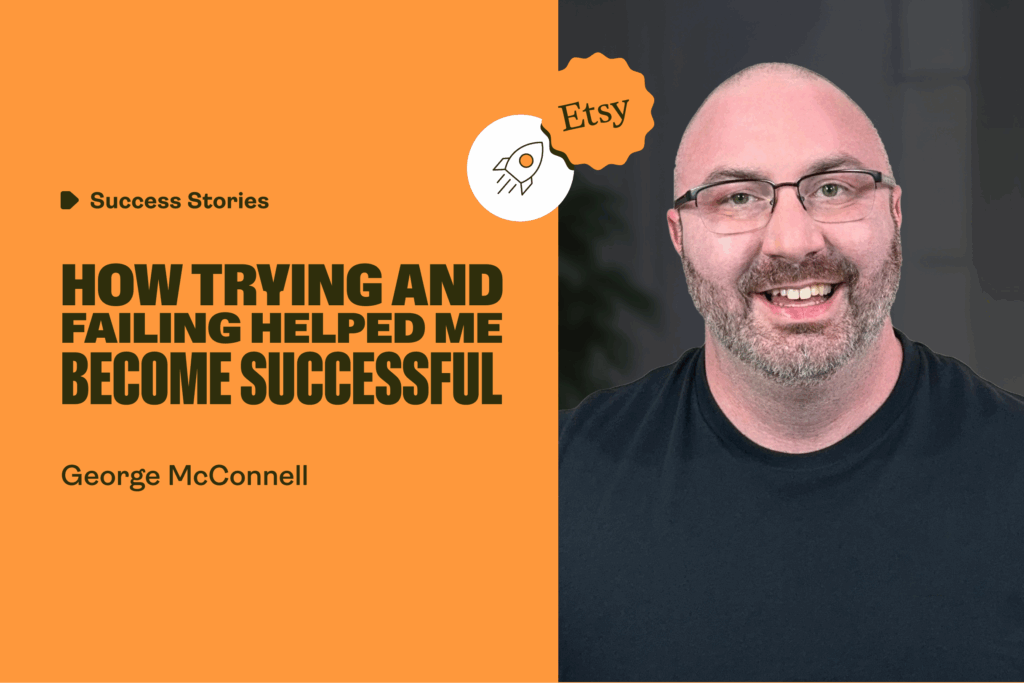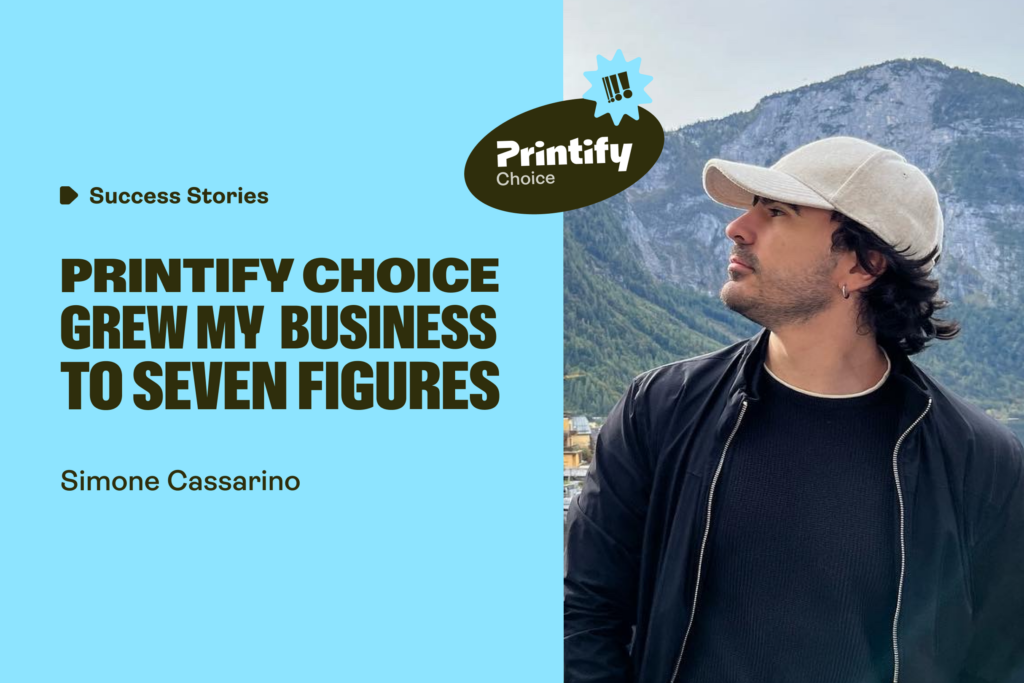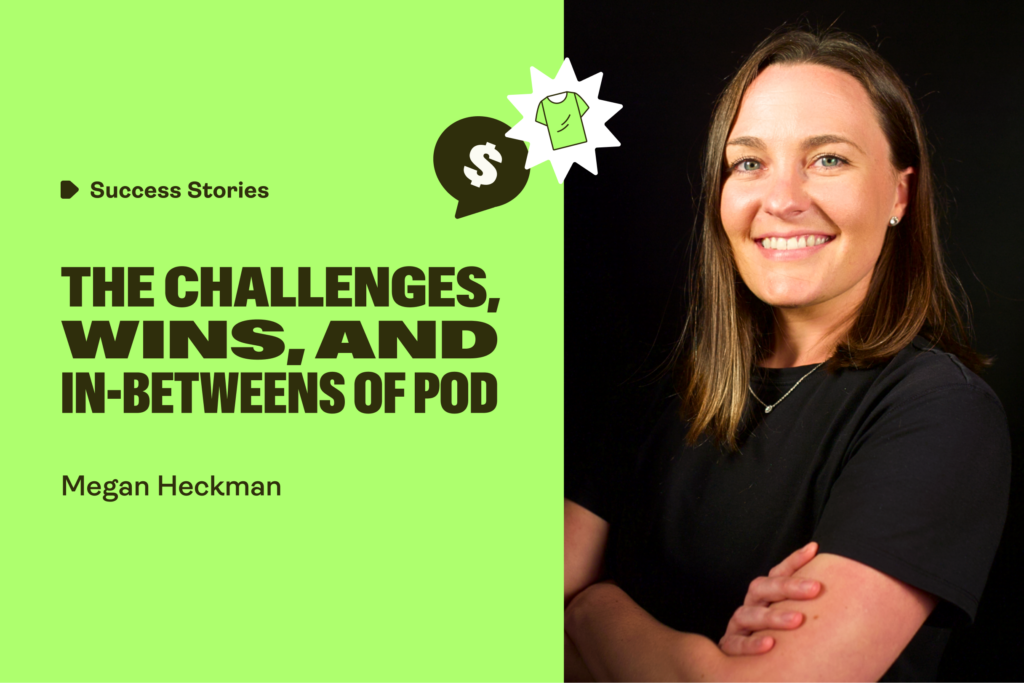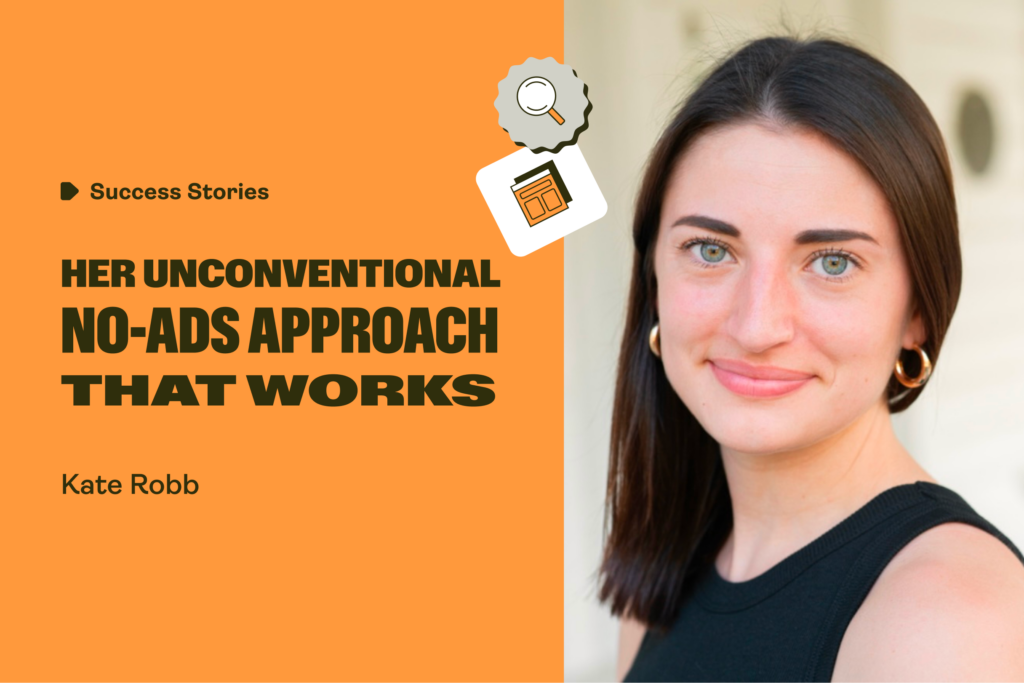Turn your dreams into success
It’s no secret that starting a business can be tough. Even experienced entrepreneurs can get overwhelmed by the time and energy it takes to succeed, pressing t-shirts all day.
Running a business means powering through long work days and periods of uncertainty, even when making sales. It might make sense to quit and get a 9-to-5. But as we’ll learn today, there are better ways to do it with print on demand.
Today’s success story features Byron Allen, an entrepreneur who persevered through the difficult times and, when he switched to Printify, turned his business around into an impressive six-figure Etsy operation in just one year.
Hi Byron, when did you start your online business?
I decided to start a t-shirt business back in 2014. Back then, there weren’t many print-on-demand choices available, and I had no idea such a service existed. I purchased some heat transfer designs and equipment, taught myself how to build a website, and went from there.
I began marketing and promoting my business on Twitter, which is how I made my first sale. After a while, I realized I needed to invest more money into the business. I started several side hustles, including Amazon FBA, flipping items I found in garage sales, and selling Nintendo games.

So you built a successful business on your first attempt?
Definitely not. By January 2016, my wife and I had moved to Ohio from Georgia and were totally broke. I returned to a regular 9-to-5 at Home Depot and abandoned the idea of an online business. I was still making one or two monthly sales, but I was strongly considering selling my t-shirt printing equipment.
In the end, my wife persuaded me to try again, and in 2018 I decided to give the t-shirt printing idea another shot. I also expanded my niche. After selling the vintage Nintendo games on Etsy, I had an idea of how the platform worked, so I decided to create more designs and tap into a wider audience.
I learned that if you sell on your own website, you can price a little higher, but you need to spend money on advertising. I knew there was a lot of competition on Etsy, but I also knew it had a lot of traffic, so I stayed.
Are you a newcomer to print-on-demand and unsure how the concept works? Here’s What It Is and How It Works.
Did your new plan pay off?
By 2019, I was back to pressing t-shirts and selling on Etsy full-time. That year, I made around $36,000 in sales using many of the skills I’d learned from my earlier experiments.
During the pandemic in 2020, many people turned to online shopping, creating a large demand for online businesses. My t-shirt sales grew to $100,000, with me still doing everything in-house. Even though sales were good, I was working nine hours per day pressing shirts.
After a year of pressing t-shirts, it was all too much. I was doing more logistical labor and wasn’t expressing myself creatively as much as I wanted.
By 2021, I felt stuck. I wasn’t enjoying the work anymore. I needed to either rent a warehouse and hire more help or go a different route.
That’s when I decided to switch to a print-on-demand business model after finding Printify.
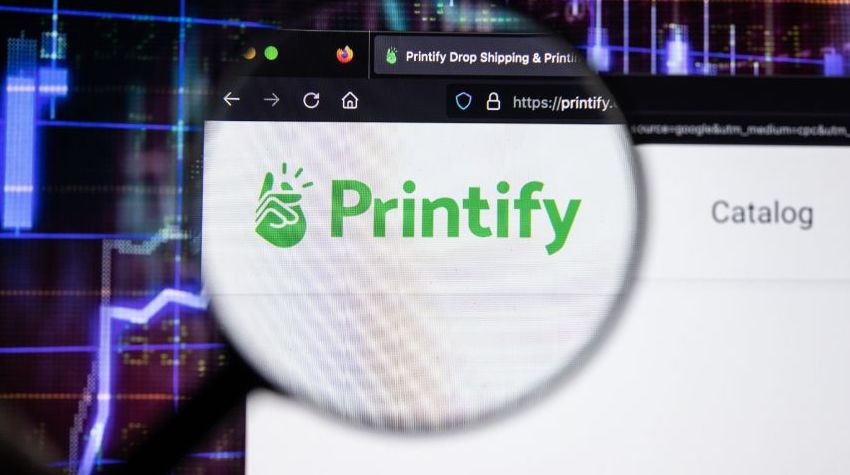
What about Printify made you trust us with your business?
The most significant improvement was not having to do any of the physical work. I was able to concentrate on the creative side of the business, which I love.
But the biggest factor was Printify’s pricing. The prices are so competitive, allowing me to stay competitive in the tough Etsy marketplace.
I also liked how easily I could connect my Etsy store to Printify, and because of their large Catalog, I got to try more products than I ever could running the business alone.
How did things improve when you switched to Printify?
Once I made the full switch to print on demand, things really took off. I was able to start designing again and even hired virtual assistants.
I moved into different niches and sold more products, including cell phone cases, socks, coffee mugs, wine tumblers, and more.
By the end of 2022, after just one year of selling with Printify, I made $350,000.
Guessing your printing equipment doesn’t get much use these days
To be honest, I still have all of my printing equipment. I also have thousands of dollars of t-shirts in boxes. One day I’ll get to a solution for that, but I’m enjoying the moment right now.
Printify has allowed me to focus on staying competitive and looking for new opportunities. I’ve gained back so much time, which has allowed me to build systems and constantly create new products.
Although you have more control when handling everything yourself, it’s much easier to provide amazing customer service when using print on demand. Especially when arranging reprints or refunds.
Printify has allowed me to become more creative. When pressing t-shirts myself, I would often hold back when using specific colors as they would have been too expensive or complicated to print myself. Now I don’t have to worry about that at all.
But perhaps the unsung hero of Printify is the customer service team. Printify’s program of pairing success managers with successful sellers is worth its weight in gold. At first, I thought I was receiving automated messages, but it turned out I was dealing with a real person.
My assigned manager, Johnny, was a complete soldier for me during the holiday season. He helped me a great deal and was always there to answer my questions.
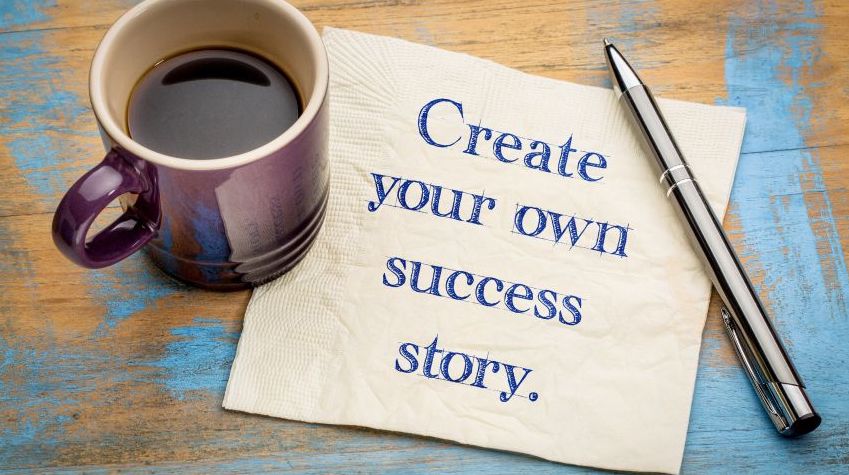
Let’s talk niche, do you sell within a specific one?
There are different ways to go about selling on Etsy. Some people pick a single niche and go deep into it with t-shirts, hoodies, hats, and more.
When I first started, I stuck to a very specific niche, but I eventually found that I had pinned myself down. These days, I like to keep things more open-ended.
I prefer to sell a set range of products and research the different categories looking for opportunities.
For example, if my target market is ‘moms with children’, I’ll branch out into different niches within that audience, such as ‘moms with kids who play sports’ or ‘moms who have pets’.
I do a lot of keyword research. My primary tool is eRank, but I also use Alura. It’s essential to do research on the actual platform you intend to sell on.
Keywords are the words and phrases people enter into the search bar when looking for items on Etsy. Adding the right keywords to your Etsy listings helps boost your visibility and sales.
On the other hand, researching what shoppers type into the search bar can help you design high-demand items. You don’t necessarily need expensive third-party tools to find high-demand, low-competition keywords.
You can simply use the Etsy Suggests function in the search bar or check what keywords your competitors use on their listings.
Now that you’re with Printify, what does your day look like?
Things have improved enormously since the early days. I usually only spend a couple of hours per week managing my stores. Virtual assistants have helped me too, and I can now spend most of my spare time creating content and teaching others how to get started.
It’s important to understand that a lot of research went into my business, and I built a system that allowed me to concentrate on creating quality products. Print-on-demand is an amazing tool, but you must use it correctly.
Platforms like Etsy are very competitive, so you can’t just throw products out there and expect people to buy them. You need to go above and beyond.

What should a new seller watch out for when getting started?
Even though Etsy is a good marketplace, you still have to put in a lot of hard work. The end of the year is the most profitable, but it is especially tough. Whether it’s Black Friday or Christmas, it can get pretty intense for first-time print-on-demand businesses.
Everyone is looking for unique gifts, and when you’re doing ten times the sales over such a short period, you need to be as prepared as possible.
I’m currently trying to build a few systems to help me handle holidays more efficiently so I don’t have to work 17-hour days. You should do the same.
– Always provide exceptional customer service
– Make sure you get plenty of samples to test the quality of your items
– Test several printers, as they may use different machinery
– Keep track of color codes to make sure everything is uniform
– Make sure your fonts are large enough to print and read
Lastly, what are your goals for 2023?
I want to do a million dollars in sales this year. I’m at $100,000 for the first quarter, so I’m doing well during the slowest part of the year. Everything will hinge on Mother’s Day and Father’s Day, and obviously, the last part of the year is when most of the sales tend to happen.
As I mentioned, I have plenty of systems and support in place, so I feel like I won’t leave as much money on the table this year. I’m already expanding on Etsy and looking to get a Shopify store started as well. My long-term plan is to build lots of niche websites and blogs and use them to send traffic back to my Shopify store.
If you’ve been inspired by Byron’s success story, check out his YouTube, TikTok, and Instagram accounts for actionable tips on creating a six-figure print-on-demand business.






